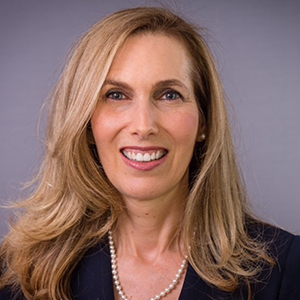How a Paycheck Protection Program loan can help your small business clients
Paycheck Protection Program (PPP) loans can be used for more than just wages. And thanks to recent changes by Congress, it’s not too late for your small business clients to apply.

In addition to extending the application deadline to August 8, Congress gave borrowers more time to repay a PPP loan, extended the covered period for eligible expenses, and relaxed or improved certain loan conditions. Federal regulators have confirmed that borrowers, in some cases, can also use a PPP loan for employee benefit costs, such as retirement plan contributions.
PPP loan basics
The PPP—part of the Coronavirus Aid, Relief, and Economic Security (CARES) Act—offers loans to small businesses to help them keep their workforce on the payroll, cover certain benefits, and pay for certain operational costs, such as mortgage interest, rent, and utilities. Under the CARES Act (as amended by the Paycheck Protection Program Flexibility Act of 2020, or PPPFA), a PPP loan carries favorable terms,¹ such as:
- An interest rate of 1%
- A five-year repayment schedule (or two years for PPP loans issued prior to June 5, 2020; however, borrowers and lenders may mutually agree to extend the maturity date of such loans to five years)
- A deferral period for payments, as explained below
- No collateral requirement
- No origination fees
And PPP loans are forgiven if certain workforce retention requirements are satisfied, such as making no cuts to staff or reducing pay more than 25% for 24 weeks (or 8 weeks, if elected, for loans issued prior to June 5, 2020). Alternatively, borrowers may qualify for loan forgiveness if their staff is restored by December 31, 2020, as further described below.
Borrowers can use PPP loans for retirement plan contributions, too
The CARES Act provides that small businesses may obtain a PPP loan for payroll costs up to an annual salary limit of $100,000 per employee, prorated for two and a half months. But payroll costs include more than just cash salaries and wages. Your clients can also include retirement plan contributions, as well as group healthcare premiums and compensation-related state and local taxes without regard to the $100,000 limit, when calculating the maximum loan amount. This means that businesses are able to borrow a higher PPP loan amount to cover certain retirement benefits, such as profit-sharing contributions for nonowner employees, on top of salaries and wages.
Other important changes to CARES Act PPP loans
The covered period to spend PPP loan proceeds—The maximum covered period to spend loan proceeds is 24 weeks (up from 8 weeks). This means that the maximum covered compensation for nonowner employees is 24 (the covered period) divided by 52 weeks, times $100,000, or $46,154 (instead of 8/52 of $100,000, or $15,385). Owner employees, such as partners, sole proprietors, and certain shareholders, are limited to two and a half months’ worth of their 2019 compensation, up to $100,000, or $20,833 (or $15,385, if using the eight-week covered period).
The ratio of payroll costs to non-payroll costs—In order to qualify for full forgiveness, borrowers must use no less than 60% of their loan for payroll and certain benefits (down from 75%), and they can use the rest for non-payroll costs, such as mortgage interest, rent, and utilities.
Deferral of employer portion of Social Security payroll tax—For the period from
March 27, 2020, through December 31, 2020, employers can postpone paying their portion of employee Social Security taxes until 2021 and 2022, even if they’re granted PPP loan forgiveness.
Deadline for rehiring and restoring wages and salaries—Borrowers now have until December 31, 2020 (the deadline was originally June 30), to restore staff to levels that were in effect prior to February 15, 2020. Also, exceptions have been added for cases where (1) borrowers are unable to rehire employees or hire similarly qualified employees; or (2) they’re unable to return to the same level of business activity as before February 15, 2020, due to compliance with certain COVID-19-related issues.
Deferral period for repaying any principal, interest, or fees—Borrowers now have until the date on which the U.S. Small Business Administration establishes the amount for loan forgiveness (previously, the deferral period was six months); however, generally, borrowers must apply for loan forgiveness by 10 months after the covered period ends to be granted such relief.
Help your clients protect both their business and their 401(k) plan
By amending the CARES Act to add flexibility to PPP loan terms and related conditions, Congress has provided small businesses with an additional financial lifeline. Because employers can use PPP loans to pay for retirement benefits, that lifeline extends to retirement plan participants and, ultimately, helps strengthen their financial security.
If you have clients with a PPP loan, make sure they know about these changes and their options. And if you have clients who are thinking about applying for a PPP loan, they should consider how to optimize the amount and uses of a PPP loan, such as covering retirement plan expenses.
1 “Paycheck Protection Program,” U.S. Small Business Administration,
sba.gov/funding-programs/loans/coronavirus-relief-options/paycheck-protection-program, 2020.
Important disclosures
Important disclosures
The content of this document is for general information only and is believed to be accurate and reliable as of the posting date, but may be subject to change. It is not intended to provide investment, tax, plan design, or legal advice (unless otherwise indicated). Please consult your own independent advisor as to any investment, tax, or legal statements made herein.
MGTS-P42505-GE 07/20 42505 MGR0720201245747




